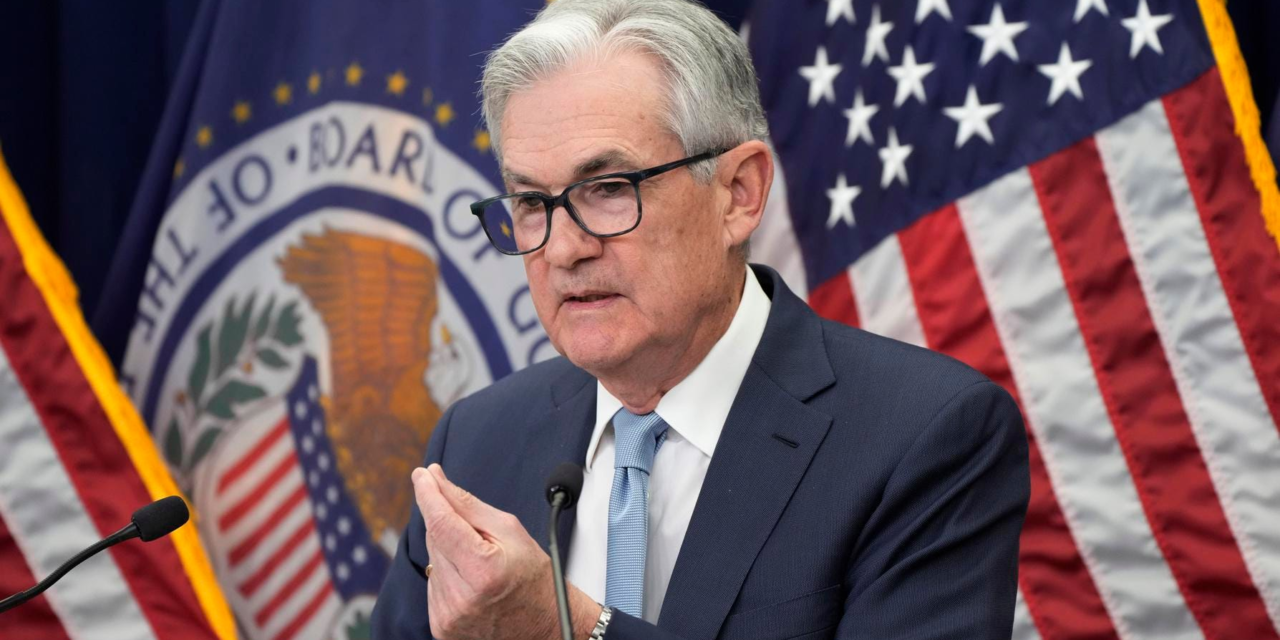Federal Reserve Chair Jerome Powell speaks during a news conference Wednesday, Dec. 14, 2022, at the … [+]
Under the leadership of Federal Reserve chair Jerome Powell, the Federal Open Market Committee has raised the Federal Funds rate seven times in 2022, most recently in November. Already, the cumulative increase is more than 4% this year.
These events are particularly jarring since the Federal Funds rate — the rate at which commercial banks borrow and lend their excess reserves to each other overnight – had hovered around zero for years – even as recently as the first quarter. The challenge for the Fed, of course, is to reduce inflation that is hurting small businesses’ costs structures (and consumer pocketbooks) without cause a recession.
FOMC Meeting Date — Rate Change (bps) — Federal Funds Rate
March 17, 2022 — 25 bps — 0.25% to 0.50%
May 5, 2022 — 50 bps — 0.75% to 1.00%
June 16, 2022 — 75 bps — 1.5% to 1.75%
July 27, 2022 — 75 bps — 2.25% to 2.5%
Sept. 21, 2022 — 75 bps — 3.00% to 3.25%
Nov. 2, 2022 — 75 bps — 3.75% to 4.00%
Dec. 14, 2022 — 50 bps — 4.25% to 4.50%
While the 50 basis points hike is smaller than the previous four increases of three-quarter-point hikes, the Fed has signaled a willingness to make further hikes, albeit smaller ones, in 2023 if inflation persists. The Federal Funds Rate now is at its highest point since early 2008.
“The inflation data in October and November show a welcome reduction, but it will take substantially more evidence to give confidence that inflation is on a sustained downward path” Powell said at his news conference on Wednesday, Dec. 14.
Federal Reserve Chair Jerome Powell speaks during a news conference Wednesday, Dec. 14, 2022, at the … [+]
According to the FOMC, recent economic indicators point to modest growth in spending and production. Job gains have been robust in recent months, and the unemployment rate has remained low. Inflation remains elevated, reflecting supply and demand imbalances related to the pandemic, higher food and energy prices, and broader price pressures.
“Over the course of the year, we’ve taken forceful actions… and the full effects of our rapid typing so far are yet to be realized,” Powell said. “So, we have more work to do. Price stability is the responsibility of the Federal Reserve. Without price stability, the economy doesn’t work for anyone. In particular, without price stability, we will not achieve a sustained period of strong labor market conditions that benefit.”
“We continue to anticipate that ongoing increases will be appropriate in order to attain a stance of monetary policy that is sufficiently restrictive, to return inflation to 2% over time,” Powell added. “Restoring price stability will likely require being more strict with policy stance for some time.”
For much of the year, inflation was the biggest worry for small business owners. In September, the quarterly U.S. Chamber of Commerce-MetLife Small Business Index found that concern for inflation among small business owners reached a new high. The Chamber reported that the vast majority (90%) of small business owners said they are concerned about the impact of inflation on their business, with 54% saying they are very concerned, up from just 31% in the first quarter.
We are now beginning to see the effects. Meanwhile, worries about inflation have been triggered, and companies such as Amazon, DoorDash, and Meta have announced layoffs. The tech sector is feeling the pain as more than 90,000 workers in the tech industry have lost their jobs in 2022, according to a report by Crunchbase.
So, the question becomes how much and for how much longer should the Fed keep raising rates before it hurts consumers and small businesses alike. This is the balancing act for Chairman Powell right now. It’s a challenging period because prices are still high, but the looming specter of recission makes small business owners nervous.
Small companies looking for capital now have additional hurdles. While bank loan approval rates for small businesses continue to decline, borrowers who do get approved are incurring a higher cost of capital, whether it is expansion funding, commercial real estate loans, or simply working capital.
Thriving companies may well be able to handle higher interest rates, even though they became accustomed to near zero percentage rate loans for several years. Companies in underserved areas and firms owned by women and minorities may face a tougher time securing capital, which is the lifeblood of any small business.
In the coming year, entrepreneurs may increasingly look to the Small Business Administration (SBA) for funding. In 2022, the agency reached nearly $43 billion in funding to small businesses. It provide more than 62,000 traditional loans through its popular 7(a) loan program, CDC/504 loan program that provides long-term, fixed rate financing for major fixed assets that promote business growth and job creation., Microloan program (loans of up to $50,000 provided through SBA funding intermediaries) lending partners and over 1,200 investments through SBA licensed Small Business Investment Companies (SBICs) for Fiscal Year (FY) 2022.
WASHINGTON, DC: SBA Administrator Isabella Casillas Guzman. (Photo by Bill O’Leary-Pool/Getty … [+]
“While still managing billions in COVID relief, the SBA also delivered record lending in FY22, helping tens of thousands of entrepreneurs across our nation get the needed funding to start, grow, and build resilient businesses,” said SBA Administrator Guzman. “Our work at the SBA, under the Biden-Harris Administration, addresses entrenched inequities in capital markets and throughout our economy. We continue to make progress expanding our network of SBA lenders and removing barriers to capital for small businesses – the foundation of a competitive global economy.”
During Inflation Or Recession, Higher Interest Rates Present Challenges For Small Businesses – Forbes




